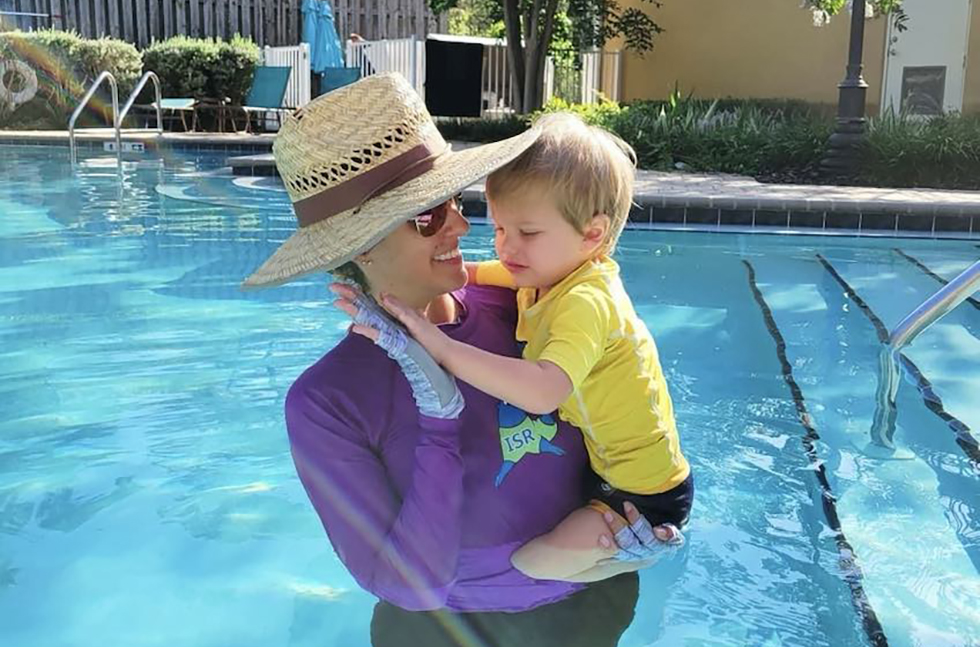The sounds of splashing and games of Marco-Polo will soon be filling our evenings once again. Sadly, 99 children aged newborn to 9 years old died from a drowning accident in the state of Florida in 2023.
In a state with a population of over 21 million people, 99 may not sound like a big number; but if you think locally, that is the equivalent of five kindergarten classrooms. Sobering thought, isn’t it?
Drowning is the leading cause of death for children aged 1-4, and the second leading cause of death for children 5-14. And it’s 100% preventable!
While many parents and caregivers rely on arm floaties, puddle jumpers and supervision as swimming aids, the question remains, “Are we doing enough to protect our children from tragedy?” Far too often, children are shown that water is a place to play – before they are prepared to survive in it.
I spoke with Morgan Giddens-Stone, a Bridges resident who is a certified Infant Swim Resource (ISR) instructor about water safety and drowning prevention.
ISR is the result of more than 55 years of ongoing development in aquatic survival instruction for infants and children. ISR’s goal is for your child to become an “aquatic problem solver” with the ability to self-rescue in the water.
During ISR Self-Rescue survival swimming lessons, certified Instructors spend one-on-one time with your child and share important water safety information with parents. Instructors integrate basic swimming instruction with survival training that is developmentally appropriate for young children. This proven method teaches children to survive with the competence and confidence to be safe around the water.
Babies as young as 6 months old who can sit unassisted can start learning these life-saving skills. Giddens-Stone explained that lessons are 10 minutes a day, Monday through Friday, for about 4-6 weeks depending on the child. After they complete their initial instruction, maintenance and refresher lessons are needed because children grow so much physically in short periods of time. These follow-up lessons are a much easier commitment than the initial commitment and prevent children from getting rusty. While it seems to be a time-consuming undertaking, these valuable minutes have saved countless lives.
Giddens-Stone became a certified ISR instructor after her then three-year-old had a near drowning in a hot tub. “My entire outlook on children around the water changed that night,” she said. “[After traditional swimming lessons] he still needed a puddle jumper or floaties to stay safe,” she reiterated. “What had we really accomplished?”
Many families find ISR lessons to be cost-prohibitive, but there are resources available to families in need, such as scholarships and sliding-scale fees.
Expectant moms: Add these lessons to your baby registry.
Grandparents: Purchase lessons for your future grandchild.
Friends/Co-workers: Go in together for these lessons as a group baby gift!
Additional tips on how to stay extra vigilant when children are around water, include:
- Verbally assign supervision if you need to leave the area. Never assume someone else is watching your children. Be sure to communicate OUT LOUD with the other adults to ensure eyes are actively on the children at all times.
- Once you are done swimming, double check the door or gate to the pool is locked, and that a child cannot unlock it. Make sure the area cannot be entered once everyone is done swimming. Again, NEVER assume this has been done. Do it yourself. Double check the pool area yourself.
- Have a pool alarm. Check the batteries often! There are also alarms available that will alert if movement is detected in the water.
- Have door alarms. The doors leading to the pool should be equipped with an alarm that will sound if the door is opened.
- Remove all toys and floats from the pool when you are done swimming. Children often want to retrieve the toys from the water and lean over to try and grab them. This can lead to a child falling in.
- Do not leave children unattended in bathtubs. Do not fill the tub unless there is someone to make sure a child cannot climb or fall into the water.
- Know CPR. Take the course – in person or online. Do a yearly refresher.
Most babies and young children will be afraid, and cry during their swimming lessons, but in the wise words of my beloved Grandma Sunny, “Better they cry now, than you cry for the rest of your life.”
Stay safe, neighbors, and enjoy the water this summer!
For more information on ISR lessons, and to find a local certified instructor, please visit infantswim.com.




